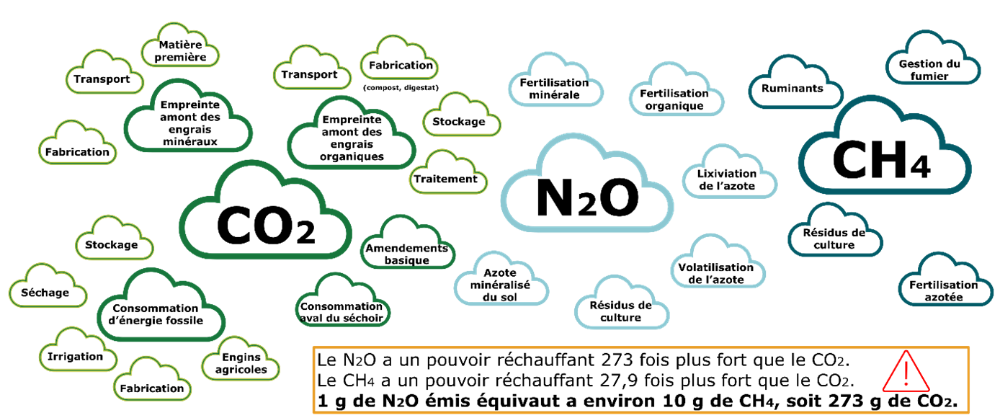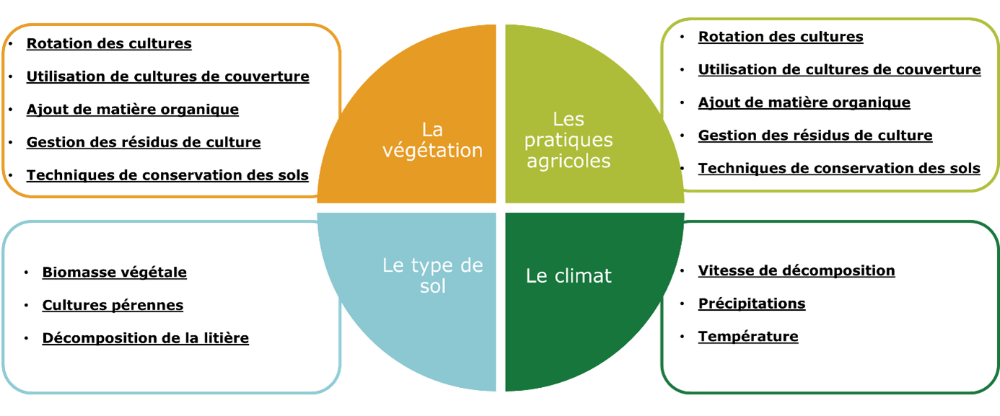Reducing greenhouse gas emissions: focus on a ClieNfarms pilot farm
Reducing greenhouse gas emissions: focus on a ClieNfarms pilot farm
Terres Inovia is taking part in a European project aimed at speeding up the transition of agriculture to help achieve carbon neutrality by 2050. Visit a pilot farm in the Ardennes that is testing low-carbon levers.
The ClieNFarms project aims to reduce greenhouse gas (GHG) emissions from farms (link to project page). Launched in January 2022 for a four-year period, it involves 33 European partners, including Terres Inovia. Following a visit to the demonstration site on 13 April (news link), one of the eight pilot farms involved in the project opened its doors on 23 May 2023.
In the context of arable farming, net greenhouse gas emissions are essentially considered by calculating the difference between greenhouse gas emissions (source) and carbon storage in the soil (sink) (see box "Processes involved"). The initial carbon assessment of a farm is based on the campaign data from the last 3 so-called reference years. Then, by simulating the levers, it is possible to estimate the reduction in GHG emissions or the increase in carbon storage on the farm. Each tonne of CO2 equivalent saved in this way can then be translated into a carbon credit if the farmer decides to commit to a low-carbon project.
If the farmer commits to the French "Low Carbon Label" certification framework, the reduction in these emissions linked to the implementation of action levers over 5 years is taken into account and will be valued in carbon credits on the voluntary market.
Achieving carbon neutrality by including winter peas in rotations
The pea plot in the Ardennes belongs to Yves Clément, a farmer who is implementing a number of levers to reduce his greenhouse gas (GHG) emissions and demonstrate their impact.
The lever presented during this visit to the pilot farm is the inclusion of winter peas in the crop rotation. As peas are a legume, they do not require nitrogen. In fact, a symbiotic relationship with a bacterium enables it to capture the nitrogen available in the atmosphere. Including peas (or another legume) in a crop rotation saves on nitrogen inputs (a source of CO2 and N2O emissions), leaves nitrogen available in the soil for the following crop and improves the crop's performance. For example, for wheat following peas grown the previous year, the nitrogen dose can be reduced by 20 to 60 nitrogen units, while raising the yield.
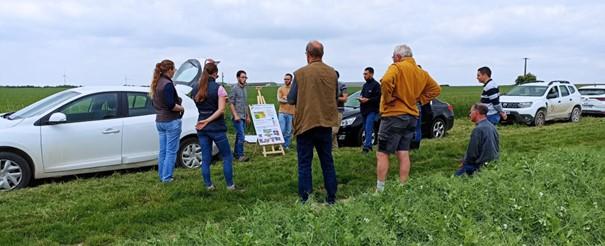
According to studies carried out in 2022 in the Grand Est region, this mitigation lever guarantees a significant improvement in the farm's carbon balance when the area of harvested legumes increases by 15 to 20%.
The mitigation effects are also increased when this lever is combined with an increase in the proportion and biomass of intercropping cover crops. It was therefore decided to implement this lever as one of the levers tested in the North-West study area of the ClieNFarms project, with the production, depending on the regional context, of peas, faba beans or soya.
Growing successful peas
To grow peas successfully, it is important to follow the key steps in the agronomic diagnosis presented by Bastien Remurier, national pea and faba bean advisor. A provisional version was presented during the tour to raise farmers' awareness of the need to observe and diagnose their peas and better assess their practices to secure their yields.
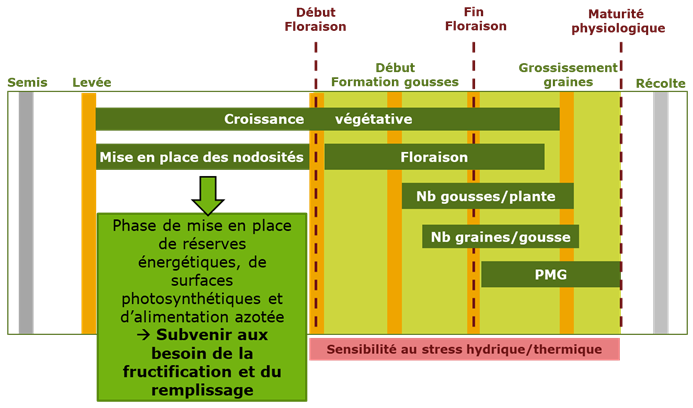
Key moments in the pea growth cycle during the crop year. (Terres Inovia 2023)
Emphasis was placed on the importance of planting and sowing date to secure potential and reduce the risk of frost and early diseases such as bacterial blight, which are often detrimental to winter peas.
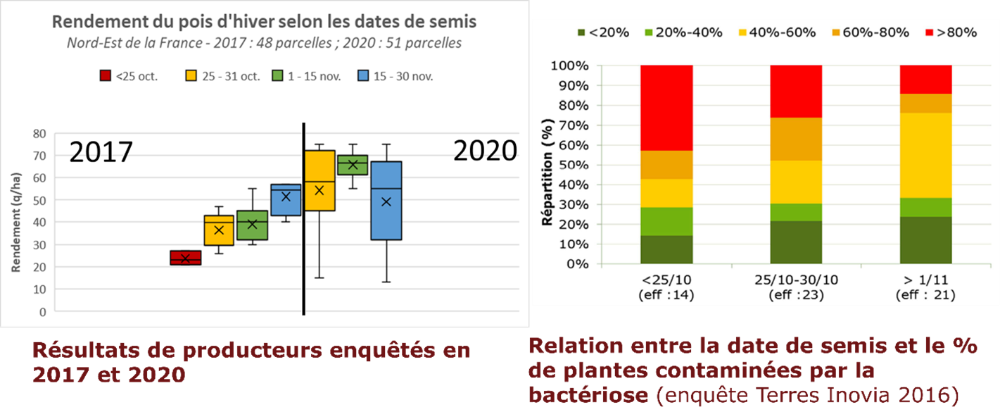
Pea sowing dates: impact on yield and risk of bacterial blight (Terres Inovia 2023)
Further visits to ClieNFarms pilot farms are planned to present a variety of low-carbon levers, with dates to be announced shortly.
| Understanding the processes involved in GHG emissions Although the three main greenhouse gases are found in agricultural emissions, nitrous oxide (N2O) is the main agricultural greenhouse gas, given its high global warming potential, which is much greater than CO2. Nitrous oxide is produced by natural soil processes, but can be greatly increased after nitrogen fertilisers have been applied to the land. The use of nitrogen fertilisers is the main source of N2O emissions in arable farming. To a lesser extent, the fuels used for agricultural work (tractors, irrigation, etc.) contribute to CO2 emissions. Sources of GHG emissions and warming power (IPCC 2018) Carbon storage in soils is linked to soil dynamics and to practices that modulate the return of organic matter to the soil. Through the process of photosynthesis, which is necessary for their growth, plants capture CO2 and the carbon then becomes part of the plant. While some of this is exported with the harvest, other biomass (roots, straw) remains in the plot. This biomass will break down, releasing carbon dioxide (CO2) and organic compounds which, as they decompose under the influence of the climate and ambient soil conditions, will evolve into more stable forms such as humus. This will enable carbon to be stored in the soil over time. Residual organic matter (livestock manure or industrial or urban residues) used as crop inputs is also a potential source of carbon, with specific dynamics depending on its composition. The evolution of the organic carbon stock in soils is therefore the result of the balance between the input of organic matter to the soil and its mineralisation.
|
